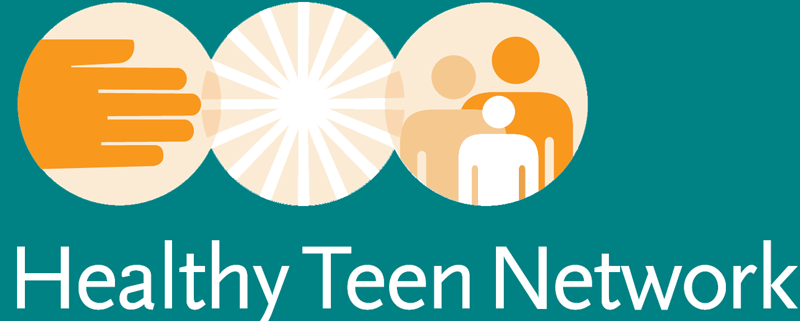Date: January 28th, 2015
By: Guest Blogger
Deprecated: get_the_author_ID is deprecated since version 2.8.0! Use get_the_author_meta('ID') instead. in /var/www/html/wp-includes/functions.php on line 4719
A Guest Blog Post by Erica Nelson, PhD, Independent Consultant
 Estimados colegas, this post is directed at those of you working to improve the sexual and reproductive health of Latino teens, to share the research findings from a Latin American public health project. Proyecto CERCA, or “Community Embedded Reproductive Health Care for Adolescents,” targeted young people living in socio-economically deprived areas of three Latin American cities: Managua, Nicaragua; Cochabamba, Bolivia; and, Cuenca, Ecuador.
Estimados colegas, this post is directed at those of you working to improve the sexual and reproductive health of Latino teens, to share the research findings from a Latin American public health project. Proyecto CERCA, or “Community Embedded Reproductive Health Care for Adolescents,” targeted young people living in socio-economically deprived areas of three Latin American cities: Managua, Nicaragua; Cochabamba, Bolivia; and, Cuenca, Ecuador.
We chose these countries because they have some of the highest rates of birth in women aged 18 and under in the Americas (ranging from 20% in Bolivia to 28% in Nicaragua). In contrast to the rest of the world, pockets of population within Latin America have shown an increase in the rates of teen pregnancy in recent years. There is a lot of speculation over why this is the case. For CERCA, we focused on inadequate sexual health education, health workers’ lack of adolescent- friendly communication and contraceptive counselling skills, and the common belief that “open talk” between adults and adolescents about sex equals giving the “green light” to premarital sex.
It is this last issue—adult/adolescent communication—that I was most interested in as the project’s ‘on the ground’ anthropology researcher. My job was to collaborate closely with teens and their families living in target communities through a network of participatory research assistants. In keeping with the project’s stated aim of “community embedded-ness,” we designed a research strategy that involved the creation of local ‘community committees” composed of adolescents and parents/family members living in the neighbourhoods and villages targeted by Proyecto CERCA activities. To get a better idea of how challenging it is to talk about sexual health with young people in this region, I recommend watching two short documentaries we made together with peer educators, participatory researchers, and community members in Cuenca, Ecuador:
One of the core assumptions of this project was that ‘more’ and ‘more open’ communication between parents and adolescents would lead in turn to better adolescent sexual reproductive health, in the sense that this communication would enable young people to work through questions about sex and sexuality with trusted family members, or learn about the mechanics of contraceptive methods, or resist partner or peer pressure to have sex.
While anthropologists have long considered the complexities of family communication, the importance of gossip and the social utility of secrecy—this way of thinking about communication has been largely absent from the dominant global public health discourse on the importance of ‘more’ and ‘more open’ communication between parents and adolescents as a key factor in shaping ASRH.
One of the things we questioned is whether explicit communication should have been measured—or made into something measurable—in the first place. In our research we found that young people, and parents, more commonly referred to “confianza,” or trust— having it or not having it—as a key factor in talking about relationships and sexuality. Importantly, however, confianza does not necessarily entail a relationship where sex is talked about openly.
We found that the differences we found in how people understood interpretations of “open communication” and ‘confianza’ did not simply reflect a translational discrepancy between public health discourse and every day language; rather, the differences pointed to larger power dynamics and changing moral and socio-sexual norms that circumscribe what can be spoken about and what must be silenced in parent-adolescent talk. These tensions are magnified where young people live together with, or in close proximity to, family members across a generational spread.
The bottom line is that communication on sexuality and sex is not just about talking, or not talking. There is a lot of other ‘stuff’ that impacts on how young people understand the family rules and social norms regarding their sexual behaviour and partnership choices. Communication in this sense includes everything that is NOT said—the silences, the evasions, the half-whispered gossip, the morality tales, and conflicting advice coming from various adult family members including aunts, uncles, grandparents, and cousins. And having confianza does not necessarily equal being able to talk open about sex —having it, wanting it, what it’s like, how to get with the ‘right’ person—all concerns of the young people we spoke with.
-
Read the full article on which this blog post is based, here: http://www.tandfonline.com/doi/full/10.1080/13648470.2014.918932#.VGCgMyjpW2w
-
For an overview of the qualitative research results, read: http://www.proyectocerca.org/Portals/0/Documentos/qualitative%20analysis.pdf
-
For more information on the creation of the documentary films and their uses within the project, check out: http://www.rhm-elsevier.com/article/S0968-8080(13)41706-8/abstract
*The research discussed here was an output of the “Community-embedded reproductive health care of adolescents in Latin America” project, funded by the European Commission FP7 Programme. The International Centre for Reproductive Health (ICRH) of Ghent University, Belgium, coordinated the research consortium. Other consortium partners included the Instituto Centro-Americano de Salud in Managua, Nicaragua; South Group consultancy in Cochabamba, Bolivia; the University of Cuenca in Cuenca, Ecuador; the Lithuanian University of Health Sciences in Kaunas, Lithuania; the University of Amsterdam in Amsterdam, the Netherlands; and CIES, Centro de Investigaciones y Estudios de la Salud, Managua, Nicaragua. All views are the author’s own.
Notice: Undefined variable: citation in /var/www/html/wp-content/themes/JointsWP-CSS-master/parts/loop-single.php on line 49
Deprecated: get_the_author_ID is deprecated since version 2.8.0! Use get_the_author_meta('ID') instead. in /var/www/html/wp-includes/functions.php on line 4719


